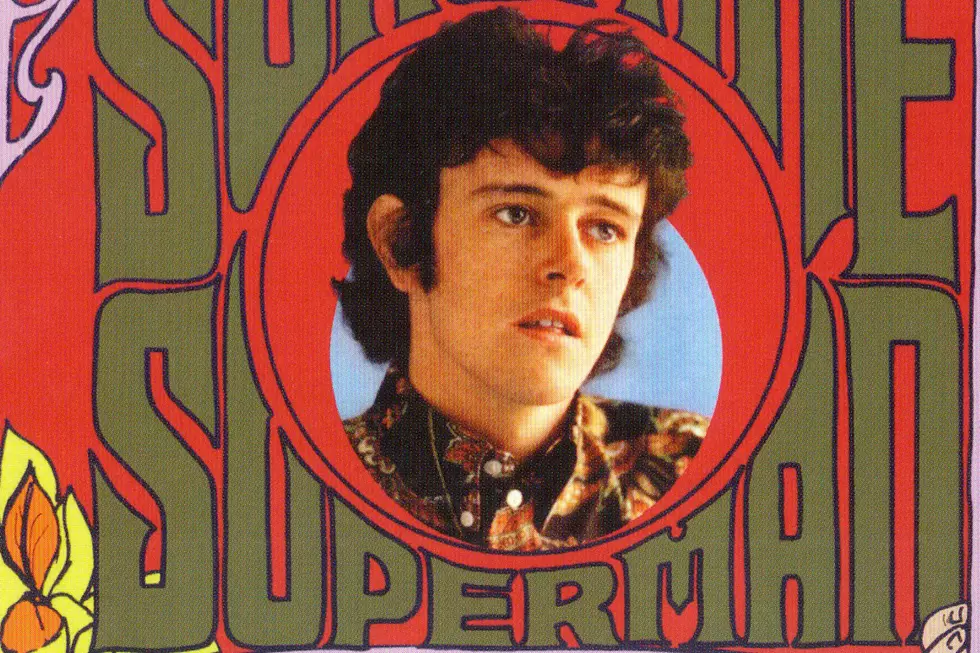
How Donovan’s ‘Sunshine Superman’ Made a Psychedelic Breakthrough
Donovan issued his debut What's Bin Did and What's Bin Hid in early 1965, notching the hit "Catch the Wind" along the way. But Donovan, perhaps reacting in part to charges that he was a Bob Dylan copyist, was soon off on a completely different path.
The single "Sunshine Superman," issued in July 1966 just before an album of the same name, presented a new Donovan who'd shed the folk/jazz-rooted sound of his first recordings. This song's kinetic sound was in tune with, as well as ahead of, the times. What made this first taste of his new direction all the more startling was that it emerged from sessions which actually began back in late 1965.
"I don’t think many people could put their finger on what I was up to," Donovan told UCR in 2012. "Only now, young journalists and history look back and see that in actual fact when you look at the calendar, that the ‘Sunshine Superman’ album was a herald of things to come. A year before Sgt. Pepper, a year before Surrealistic Pillow."
In fact, a case could be made for Sunshine Superman as the first truly, and fully, psychedelic album. The Beatles and others had obviously dipped in a toe or two, but this was arguably the first album that flowed from start to end with a psychedelic glow.
As for the title track, "it’s primarily a love song," Donovan told the Guardian in 2016, "but I was also trying to get to the invisible fourth dimension of transcendental superconscious vision. At the time, I was great pals with the Beatles. We were all experimenting, nicking sounds from each other. I was getting into baroque music and told my producer Mickey Most I wanted harpsichord on the track. 'You need an arranger,' he said, introducing me to John Cameron who understood immediately. When Mickey heard the result, he said: 'We’ve really created something here, Don. Don’t let Paul McCartney hear it.'"
Listen to Donovan Perform 'Sunshine Superman'
Sunshine Superman, released on Aug. 26, 1966, continues with "Legend of a Girl Child Linda," a stark acoustic song adorned with strings and percussion, setting the stage for "Three King Fishers," a haunting sitar and tabla-driven tune. "Ferris Wheel" continues along that path musically. His lyrics throughout are poetic, intriguing, engaging, but never cliche. "Bert's Blues," for U.K. folk legend Bert Jansch, harkens back slightly to 1965 for a moment.
"Season of the Witch," one of the album's best known and most loved tracks, became a staple for many cover bands. It's free-flowing groove and haunting lyric made a perfect framework for skyward jamming. Despite its title, "The Trip" is one of the earthiest numbers with its blues-based surge. "Guinevere" is another sitar and strings-laced tune, and one of Donovan's most beautiful songs.
"The Fat Angel," meanwhile, floats along with sitar, tabla, bass and acoustic guitar as the bedding for a majestic vocal. Donovan whispers "Cass" in the song's middle as a tip of the hat to Cass Elliot of the Mamas and Papas, while also name-checking Jefferson Airplane a year before the San Francisco band fully exploded onto the public's radar. The album ends with "Celeste," possibly the most beautiful song Donovan ever wrote. The melody, the lyric and the instrumentation are shimmering and gorgeous. It also serves to bring the listener earthbound following the aural trip they have just been on.
"Sunshine Superman" would be Donovan's first, and only, No. 1 hit in America; the LP was delayed for British release until nearly a year later, however, due to contractual issues. Even then, it arrived in a modified format featuring tracks from its U.S. follow-up, Mellow Yellow. Donovan would ultimately send six more albums in to the Billboard Top 40, but Sunshine Superman remains his crowning achievement.





